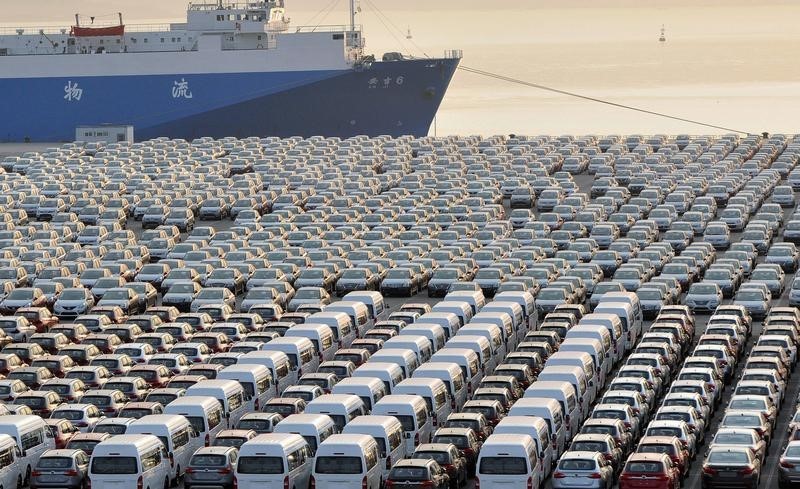By Gina Lee
Investing.com – China’s export growth slowed down in January and February 2022 as the country celebrated the Lunar New Year holiday. Although higher than expected, the Russian invasion of Ukraine in late February heightened the uncertainty over the outlook for global trade in 2022.
Data released earlier in the day showed that exports grew 16.3% year-on-year. This was higher than the 15% growth predicted in forecasts prepared by Investing.com but lower than the 20.9% growth recorded during the previous month.
Imports grew 15.5% year-on-year, down from both the 16.5% growth in forecasts prepared by Investing.com and the 19.5% growth recorded during the previous month. The data also showed a trade balance of $115.95 billion, higher than the $99.5 billion in forecasts prepared by Investing.com, as well as the $94.46 billion figure recorded during the previous month.
The data for January and February was combined to smooth distortions caused by the Lunar New Year holiday, which can fall in either month. Factory activity normally slows down over the week-long holiday as workers journey to their hometowns. However, factories kept operating for a third consecutive year as COVID-19 concerns discouraged travel.
China’s export sector exceeded expectations for much of 2021, contributing to economic growth in that year. However, some investors warn of an eventual slowdown as overseas demand for goods eases and exporters feel the pressure from rising costs. The government on Saturday said it is targeting economic growth of “around” 5.5% in 2022 amid an uncertain global recovery and a downturn in the country's vast property sector.
The Russian invasion of Ukraine on Feb. 24 and the increasing number of Western sanctions are emerging as a headwind for the global economy. The fresh risk adds to the strain for Chinese factories, which have already felt the pressure from months-long supply chain bottlenecks.
The conflict also saw Chinese exporters with exposure to Ukrainian markets delay shipments. Other factories with business in Russia have been waiting for payment from their clients before arranging the next shipments, factory officials and analysts told Reuters.
